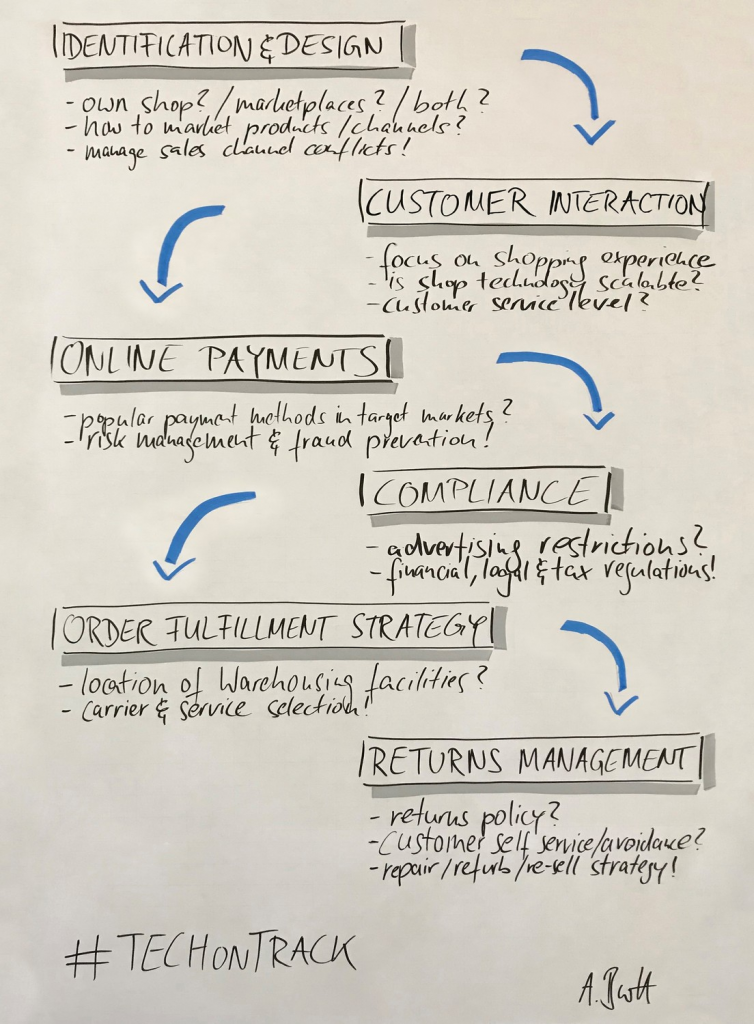Prepare for e-commerce challenges – strive for success
When you begin selling online, you have the advantages of direct-to-customer communication, enhanced brand control, and higher margins. In addition, you are faced with a new set of challenges. Unless you are a purely online player, channel conflicts will develop and must be managed. This means creating a profitable and equitable balance between OEMs, wholesalers, and retailers, while introducing a new distribution approach. E-commerce also creates significant, and often painful, changes within the organization, as traditional relationships and workflows between individuals, teams, and external partners change.
Why should your target audience buy on your site?
Developing a real USP in e-commerce requires a serious commitment to understanding your customer’s experience. Executed well, though, it can bring game-changing results. In addition to clear and realistic objectives aligned to an overall business strategy, a successful move into the e-commerce channel also requires a clear understanding of your company’s unique path. The nature of each step along the path will depend on the purpose of the e-commerce project, but they may include, for example, increasing customer loyalty, creation of marketing buzz, or effective utilization of a partner like Amazon or eBay. Leaders often lack a full appreciation of the difficulties and requirements involved with e-commerce. Time, financial resources, effort, and talent are frequently underestimated in the budget.
Traffic is the top of your sales funnel
It’s a safe bet that with little or no traffic on an e-commerce site, there will be few or no sales. No matter how good the product or content is, the challenge is to get traffic. Seems simple? It isn’t. A solid brand is not enough. Customers need a reason and way to come to the site that is different and better than those of the alternatives. At this point you can choose one of two different solutions, or a combination of both. First, build traffic on your branded e-commerce site. Then use attractive pricing and easy-to-use websites to turn visitors into buyers. Alternatively, partner with established marketplaces that deliver substantial traffic, but eat into your margins.
Think fast, not big
The best e-commerce sites start small and, with care, develop into major revenue sources. It’s fast, relatively inexpensive, and low risk. This means that if a mistake is made, it is much easier to fix and its impact is limited. There is a tendency in many large organizations to go big early. This approach risks embarrassing, costly, and sometimes career-ending missteps. The e-commerce environment moves fast. A big corporate project can never keep pace and is often obsolete the moment it is launched. From my perspective I see the biggest success in a phased approach across geos and product segments with a clearly defined and transmitted USP.
Get the boss’s buy-in or prepare to fail
Selling your goods online has an effect on sales, marketing, logistics, finance, and technology – in other words, it is a strategic decision with a long-term strategy building up new channels that require attention and support from the C-suite by understanding their business goals and their concerns. Their feedback is invaluable. Getting the buy-in from the senior management is not a one-time event. It is an ongoing task that requires substantial resources and stakeholders from project kick-off to launch and beyond.
Maybe I should DIY this thing?
Any manufacturer of any scale should look at the make-or-buy decision for something like this, and immediately reject this as an alternative. Unless this capability already exists within your business, don’t waste your time and money building it yourself. With online sales, the stakes are higher – much higher because social media enables a dissatisfied customer to tell thousands or even tens of thousands of potential buyers about your bad service, whether real or imagined.
Once the business objectives are nailed down, the building blocks of your e-commerce and fulfillment set-up can be assembled with the guidance of a partner. A good e-commerce and fulfillment partner will guide your company through the development process and ensure that your online solution delivers the predefined USP and meets your requirements. The partner should make sure you don’t have to worry about maintaining the site and its content, collecting money, shipping goods without breaking local laws, and taking care of customers with items to be returned.
In a nutshell
To be successful in e-commerce – whether it’s used as marketing channel, sales driver or both – focus on the business fundamentals and on aligning these at all levels of your organization. Make up your mind about the questions outlined in the scribble below and focus on the appropriate partner who will take care of the execution.
Have you already considered the following subjects and questions?


 07 września 2018
07 września 2018  Andreas Barth
Andreas Barth
 Arvato
Arvato
